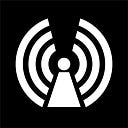How many layers?
That's quite arbitrary. Shamanism has three, Buddhism has 31, Hinduism 14, Kabbalah has 10 (and depending on the arrangement less), Yoga and many relatively modern western traditions go with 7, Castaneda introduced 9, hard sciences or Taoism have none, etc. Jung specifically can be organized into 5 or 3. What’s more important — the overarching trend of all of them is: concrete <-> abstract; material <-> mental; instinctive <-> rational; dense <-> subtle; etc. The actual numbers don’t matter.
Layers beyond the biological and instinctual? Layers beyond the psyche?
Sort of, but not exactly. The potentials shape (perhaps a better word would be “inform”) biological, instinctual, as well as psychic but cannot be separated from them. It's very well illustrated in Buddhism and Kabbalah -- the planes of existence (or fields) correspond 1:1 with psychic states. And although they are considered as separate "worlds" they are defined by people who inhabit them. And going full circle, to inhabit these worlds there's a mind necessary and for that you need a living being. Hence, the potentials are inherent in manifestations. Essentially, everything we encounter contains all those layers at all times, and whether we perceive them (or how much, or which ones) depends only on our awareness. So, right now you are in heaven as well as hell as well as on Earth and the predominant experience is only a function of your momentary mental state (to put it very simply). Or to put it differently -- where's the potential of a billiard ball falling into a bag while the ball travels toward it?
What is the above in this context?
In context of "creation" -- above: potential <-> below: manifestation. Then in context of manifestation -- above: blueprint (archetype) <-> below: personal form.
